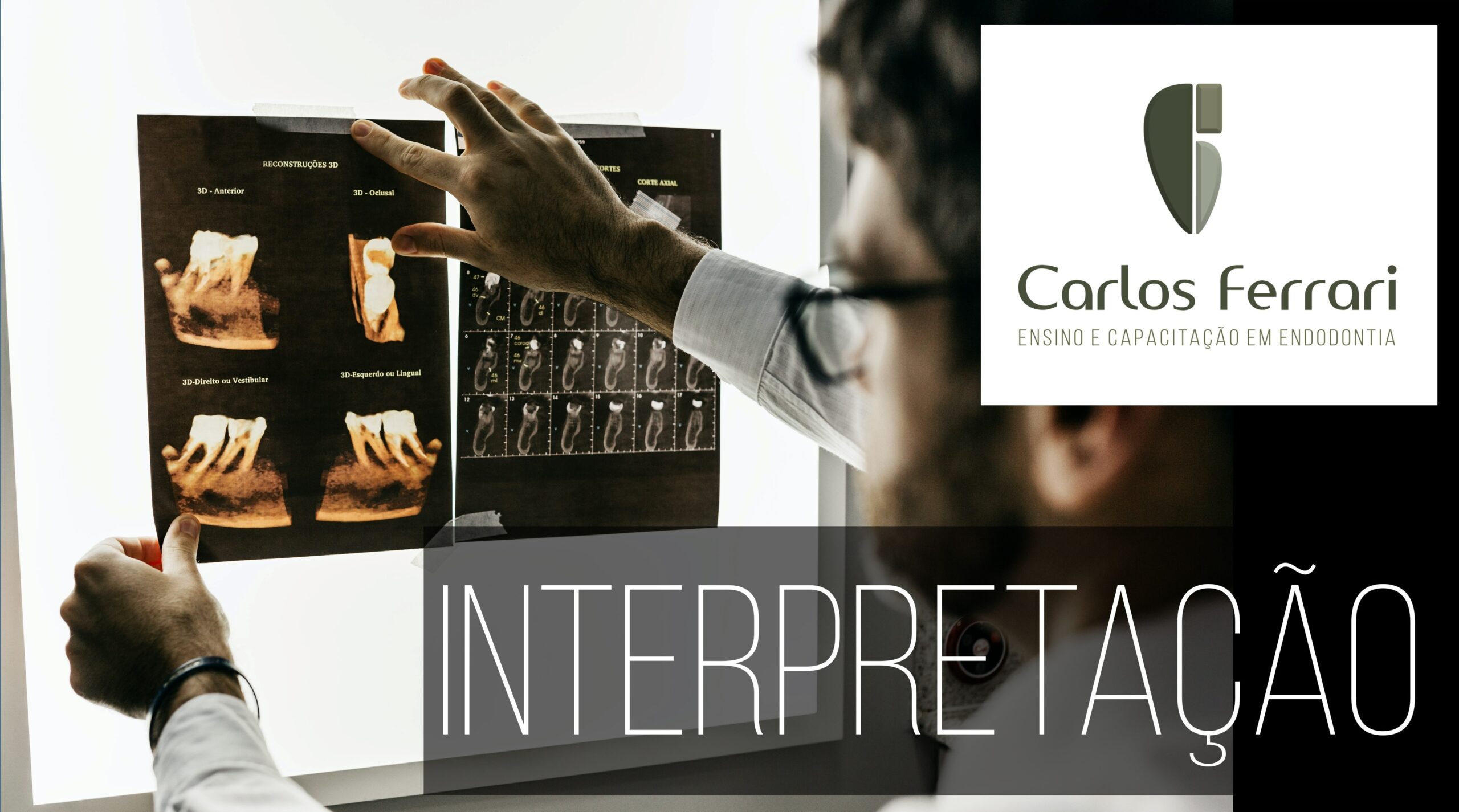Tomography in endodontics. Part 2. Online Class in Carlos Ferrari Endodontics channel on youtube. Tomography Interpretation.
In this class we will discuss the different aspects related to the interpretation of cone beam CT scans in endodontics.
n: Ferrari, CH. Radiology in Endodontics. In: Machado, Ricardo. Endodontics: Biological and Technical Principles. Available at: GEN Group, GEN Group, 2022
Interpretation
The limitations of radiographic examination impose difficulties regarding its interpretation in the different phases of endodontic treatment or retreatment. The most important of these is its two-dimensional nature, which requires the surgeon to pay special attention, especially in posterosuperior teeth.
Initially, one must pay attention to the quality of the images. One should never interpret faulty or low quality radiographs (analog or conventional).
Digital radiographs have made the interpretation process easier due to the higher quality and larger size, and the possibility of graphic manipulation. For the interpretation of a conventional exam, the use of a magnifying glass and an LED light negatoscope is strongly recommended.
Another important aspect, already mentioned, consists in the execution and study (interpretation) of more than one radiograph taken with different angulations of the same tooth or region. Paraphrasing Mattaldi, in 1979, "the interpretation of cases based on a single image is to confuse the examination of a radiograph with a radiographic examination".
Finally, the professional must interpret a radiograph in the presence of the patient. The data from the history and clinical examination must be associated with the radiographic interpretation. Again quoting Mattaldi, "the condition or pathology that is being investigated is found in the patient and not in the radiograph".
Overlapping images in Endodontics
Some anatomical structures present radiolucent radiographic images that, depending on their position, can be confused with periapical bone rarefaction of endodontic origin. Variations in X-ray beam angulation (Clark technique), together with previous information obtained through anamnesis and clinical examination, are fundamental for the differential diagnosis.
In the maxilla, the structures capable of producing such effect are the palatine canal and foramen, which can have their image superimposed on the apexes of the maxillary central incisors, especially in radiographs with distroradial incidence. Another anatomical structure frequently confused with periapical lesions in premolars and especially in maxillary molars is the maxillary sinus (Figure 6.20). Its anatomical and morphological heterogeneity can produce images similar to periapical lesions that can confuse even experienced clinicians. Also in the maxilla, the periodontal ligament adjacent to the molar roots can simulate the presence of root fractures and additional canals.
In the mandible, the anatomical structures that most cause doubts in the interpretation of radiographic exams taken using different techniques are the mandibular canal - which overlaps the root apices of the molars - and the mental foramen - which can mimic a periapical lesion in premolars.
Endodontic anatomy
Radiographic examination provides information about dental anatomy and morphology, and the state of the periodontal and periradicular tissues. Such information is crucial for the establishment of correct diagnoses and treatment plans.
Enamel and dentin have a distinct radiographic appearance due to the amount of mineral compounds in their constitution (90 and 70%, respectively). The cementum, in turn, can hardly be identified, except when produced abnormally (hypercementosis).
The periodontal ligament cannot be observed radiographically. What can be seen is the radiolucent space between it and the alveolar cortical bone, which, because it is more compact, produces a characteristic radiopaque line, called lamina dura.
The radiolucent image normally located in the center of the root, called a radiographic root canal, is actually the space inside the dentin, filled by the pulp that occupies the pulp cavity - chamber and main root canal(s). However, the root canal system, composed of lateral canals, apical branches and deltas, is not visualized radiographically. In some situations, larger caliber lateral canals can be identified, especially when filled with obturating cement.
The apical foramen is rarely located at the root apex, and is most often found in a slightly more cervical and lateral position. Moreover, it cannot be identified from the radiographic examination and therefore the determination of the apical limit of instrumentation (and obturation) is much more accurate through the use of electronic foraminal locators (for more details, we recommend reading Chapter 12, Determination of the Shaping Working Length or Apical Limit of Instrumentation - Odontometry).
When facing teeth with abnormal radiographic features, some causal factors can be considered. The impossibility of identifying a root canal in an anterior tooth, for example, usually indicates mineralization or post-traumatic calcification of the pulp tissue.
Radiopaque areas in the root canal indicate the presence of mineralized tissue. When the canal "disappears" and "reappears", there is usually a portion of this tissue "dividing" it. In the apical region, the disappearance of the canal is a strong indication that the location of the foramen does not coincide with the anatomical apex or signals the presence of an apical delta.





